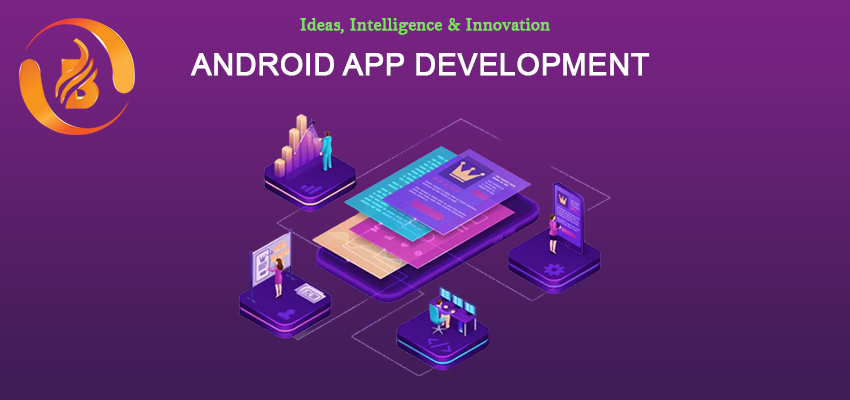Programming languages
A programming language is a formalized system of communication used to instruct a computer or other machine to perform a set of specific tasks. It serves as a medium for humans to write instructions and algorithms that a computer can understand and execute. Programming languages provide a structured way to write code for the software development company in Salem, and they consist of a set of rules, syntax, and semantics that developers use to create computer programs.
Frameworks
A framework is a pre-established and reusable software structure that provides a foundation for building applications or software of a specific type or within a certain domain. It offers a set of guidelines, libraries, and pre-written code that simplifies and standardizes the development process. Frameworks are designed to address common challenges and tasks within a particular domain, enabling software development agency to focus on application-specific logic and functionality rather than reinventing the wheel.
A programming language and a framework are two distinct but interrelated concepts in software development. Here are some of the frameworks for programming languages.
Python:
- Frameworks:
- Django: A high-level Python web framework for building robust and scalable web applications development.
- Flask: A lightweight and flexible micro-framework for building web applications.
- PyTorch: A deep learning framework for machine learning and artificial intelligence.
- FastAPI: A modern, fast (high-performance) web framework for building APIs with Python.
JavaScript:
- Frameworks:
- React A JavaScript library for building user interfaces, commonly used for single-page web applications.
- Angular: A comprehensive web application framework by Google.
- Vue.js: A progressive JavaScript framework for building interactive web interfaces.
- Node.js: While not a framework, Node.js is a runtime environment that enables server-side JavaScript development.
Java:
- Frameworks:
- Spring Framework: A comprehensive framework for building Java-based enterprise applications.
- Hibernate: An Object-Relational Mapping (ORM) framework for simplifying database interaction.
- JavaServer Faces (JSF): A Java-based web application framework for building user interfaces.
C#:
- Frameworks:
- .NET Framework: A framework for developing Windows applications, web applications, and more.
- ASP.NET: A framework for building web applications and services using C#.
- Xamarin: A framework for developing cross-platform mobile apps using C#.
- Entity Framework: An ORM framework for C# developers.
Ruby:
- Frameworks:
- Ruby on Rails: A web application framework known for its developer-friendly conventions.
- Sinatra: A lightweight Ruby web framework suitable for small web applications and APIs.
- Hanami: A modular Ruby web framework for building modern web applications.
PHP:
- Frameworks:
- Laravel: A popular PHP framework for web application development.
- Symfony: A comprehensive PHP framework used for building large-scale applications.
- CodeIgniter: A lightweight and straightforward PHP framework.
- Zend Framework: A PHP framework with a focus on security and enterprise-level applications.
C++:
- Frameworks:
- Qt: A cross-platform application framework for desktop and embedded applications.
- Boost C++ Libraries: A collection of high-quality, peer-reviewed C++ libraries.
- POCO C++ Libraries: A set of open-source C++ libraries for building networked applications.
Swift:
- Frameworks:
- SwiftUI: Apple’s framework for building user interfaces for iOS, macOS, watchOS, and tvOS.
- Vapor: A server-side Swift framework for building web applications and APIs.
- Kitura: An open-source Swift framework for building server-side applications.
The Key Difference between the Framework and Programming languages
Purpose:
- Programming Language: It provides the syntax and tools to write code, allowing you to create various applications.
- Framework: It is a pre-built structure or set of libraries that provides a foundation for building specific types of applications.
Example:
- Programming Language (Python):
- Framework (Django): Django is a Python web framework for building web applications.
Abstraction Level:
- Programming Language: It provides low-level constructs for building software, offering great flexibility.
- Framework: It abstracts common functionality, streamlining development in a specific domain.
Example:
- Programming Language (C++):
- Framework (React): React is a JavaScript framework for building user interfaces, abstracting away the DOM manipulation.
Independence:
- Programming Language: Independent of specific application types.
- Framework: Designed for a particular domain, reducing flexibility for other types of applications.
Example:
- Programming Language (Java): Can be used for web, mobile, desktop, and server applications.
- Framework (Ruby on Rails): Primarily used for web application development.
Syntax vs. Structure:
- Programming Language: Defines language syntax and rules.
- Framework: Provides a predefined structure and conventions for building applications.
Example:
- Programming Language (JavaScript):
- Framework (Express.js): Express is a Node.js web application framework that defines a routing structure for web applications.
Extensibility:
- Programming Language: Highly extensible, allowing developers to create custom libraries and frameworks.
- Framework: Extensible within the constraints and guidelines of the framework.
Example:
- Programming Language (Python): Developers can create their own libraries and modules.
- Framework (Laravel): Laravel provides mechanisms for extending its functionality through packages.
Language Features:
- Programming Language: Offers a wide range of language-specific features.
- Framework: Leverages the features of the underlying programming language.
Example:
- Programming Language (Python): Supports object-oriented, functional, and imperative programming.
- Framework (Spring Boot): Utilizes Java features for building Java-based web applications.
Portability:
- Programming Language: Code written in a language can be used on different platforms.
- Framework: This may have platform-specific dependencies, limiting portability.
Example:
- Programming Language (C): Code can be compiled for various platforms.
- Framework (iOS SDK): Designed specifically for iOS app development.
Learning Curve:
- Programming Language: Learning the language syntax and features.
- Framework: Learning the framework’s architecture, components, and conventions.
Example:
- Learning Python vs. Learning Django for web development.
Tooling:
- Programming Language: Requires external libraries and tools for specific tasks.
- Framework: Often includes built-in tools and libraries for its intended purpose.
Example:
- Using Python libraries like NumPy for data analysis.
- A web framework like Ruby on Rails includes tools for database migrations and routing.
Community and Ecosystem:
- Programming Language: Has a broader ecosystem, including various libraries and frameworks.
- Framework: Has a more specialized and focused community.
Example:
- Python language has a wide ecosystem for web development, scientific computing, and more.
- The Django framework community primarily focuses on web application development.
Here are some key characteristics of frameworks:
- Abstraction: Frameworks abstract common tasks and operations, allowing developers to focus on the specific logic or functionality unique to their application.
- Reusability: Frameworks often include pre-written code modules and libraries that can be reused across different projects, saving time and effort.
- Consistency: Frameworks establish coding conventions and best practices, promoting consistency in the codebase and making it easier for developers to work together on a project.
- Extensibility: Most frameworks are designed to be extensible, allowing developers to add custom code and functionality while adhering to the framework’s structure and guidelines.
- Productivity: Using a framework can significantly increase development speed, as developers don’t need to start from scratch and can take advantage of built-in features and tools.
- Security: Many frameworks come with built-in security features and mechanisms to help protect applications from common vulnerabilities.
- Maintainability: Frameworks often promote better code organization and separation of concerns, which makes it easier to maintain and update applications over time.
- Community and Support: Popular frameworks have active communities, which means that developers can find documentation, tutorials, and community support when working with a framework.
Here are some key characteristics of programming languages:
- Syntax and Semantics: Programming languages have specific syntax (rules for writing code) and semantics (meaning of code) that developers must follow. Syntax defines how statements and expressions are structured, while semantics determine how those statements and expressions are executed.
- Abstraction: Programming languages provide a level of abstraction that allows developers to work with high-level concepts, such as variables, functions, and objects, rather than dealing directly with machine-level instructions.
- Instruction Set: Each programming language has its own set of keywords, operators, and functions that developers use to create algorithms and solve problems.
- Compilers and Interpreters: Programming languages are implemented using either compilers or interpreters. Compilers translate the entire source code into machine code, which the computer can execute directly. Interpreters run code line by line.
- Expressiveness: Different programming languages have varying levels of expressiveness, which determines how easily and concisely developers can express ideas and solve problems in the language.
- Application Domains: Programming languages are often designed with specific application domains in mind. For example, some languages are well-suited for web development, while others are used for scientific computing, mobile app development, or game development.
- Standard Libraries: Most programming languages come with standard libraries that provide pre-built functions and tools, making it easier to perform common tasks.
- Portability: Code written in a programming language should be portable, meaning it can run on different platforms or systems with minimal modifications.
In summary, programming languages provide the foundational tools for coding, while frameworks are specialized tools that provide structure and abstractions for specific application domains. The choice between a programming language and a framework depends on the project’s requirements and goals of the software development companies in Tamil Nadu.
Visit Us At: www.biovustechnologies.com






